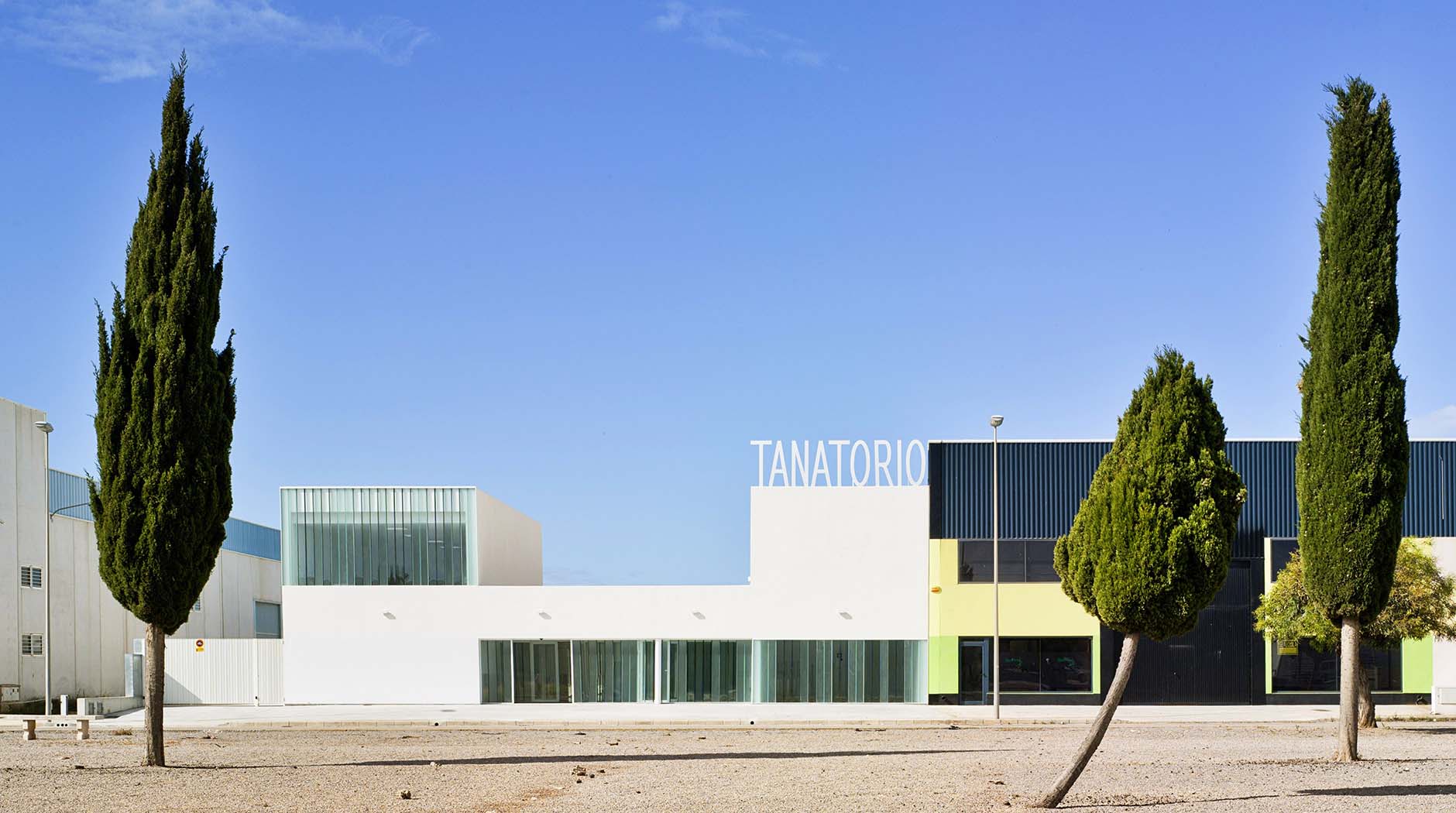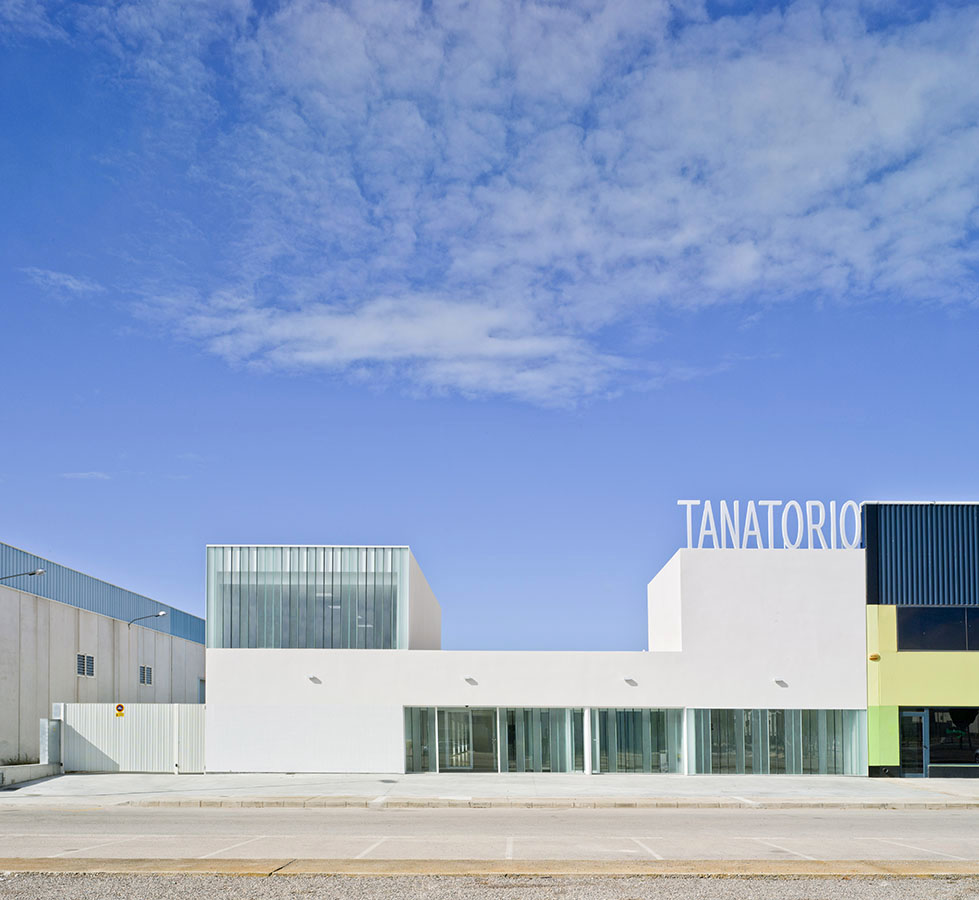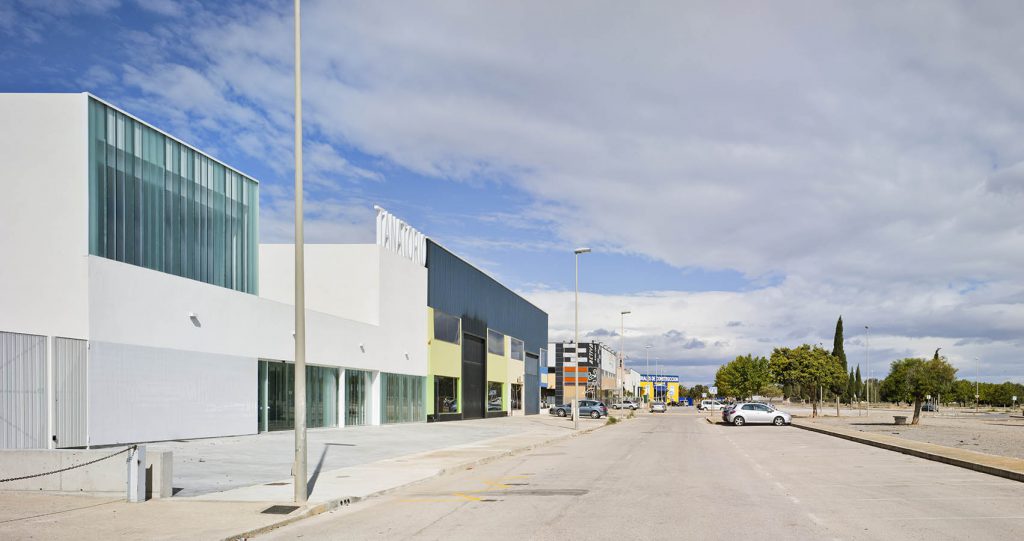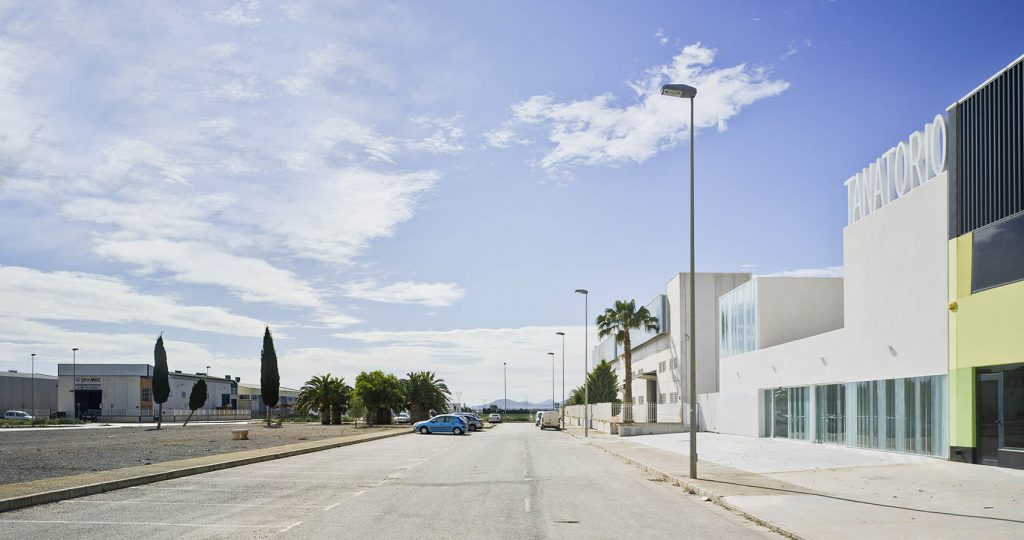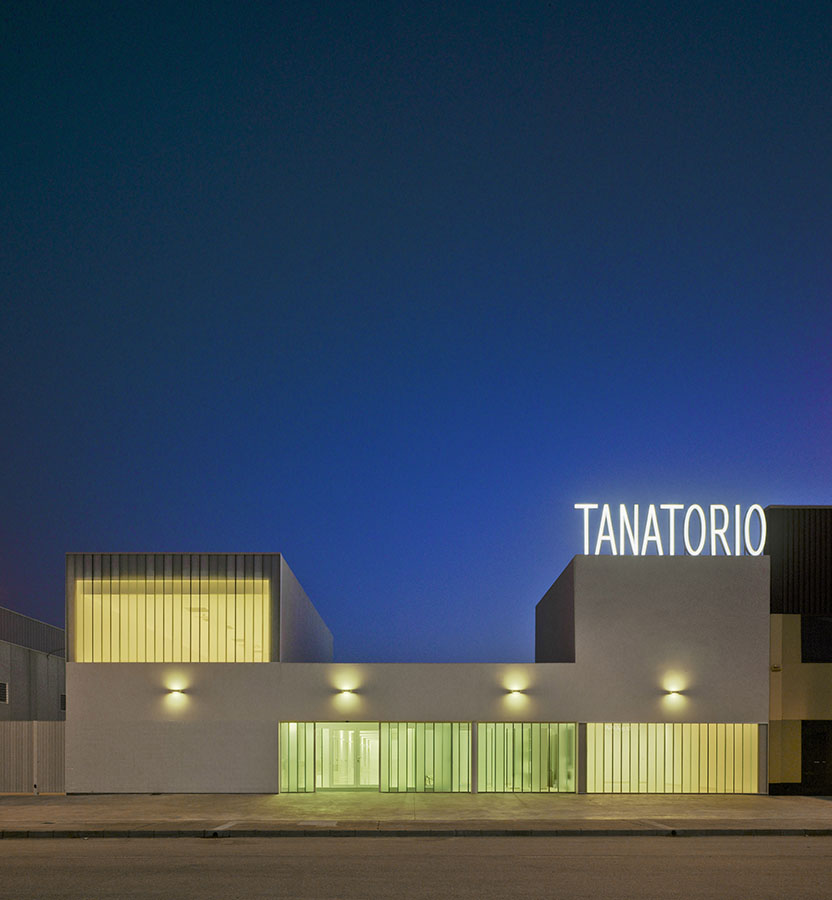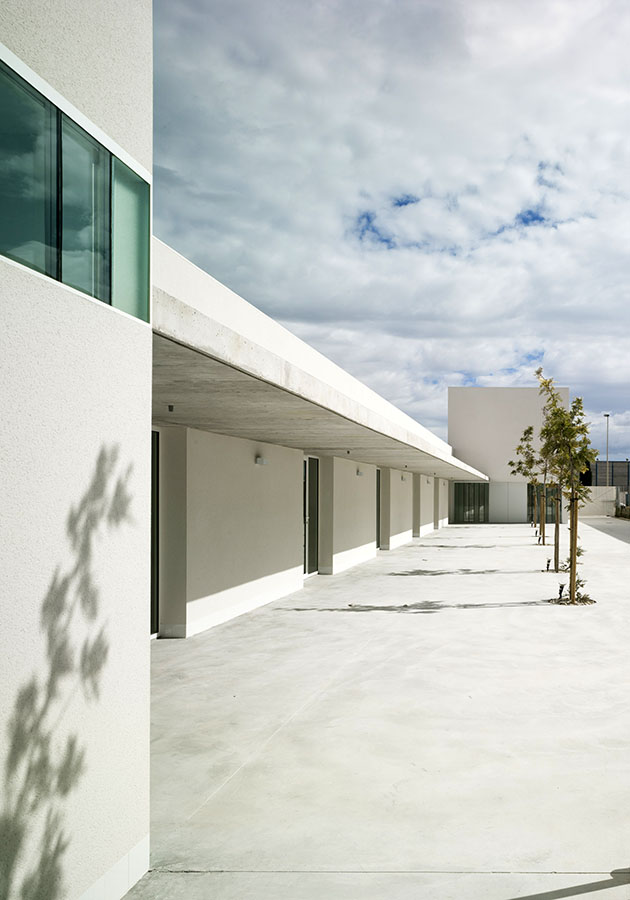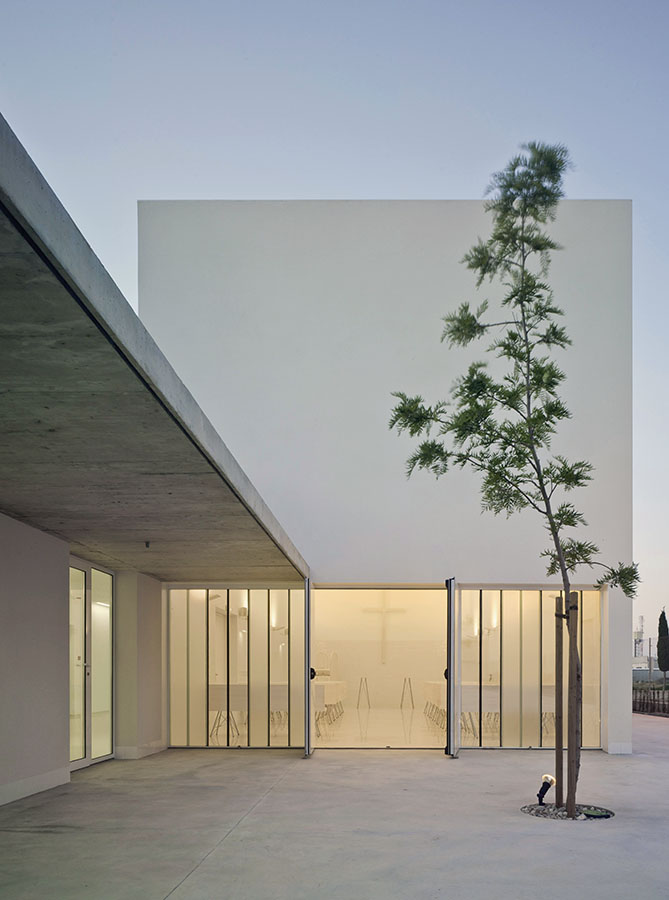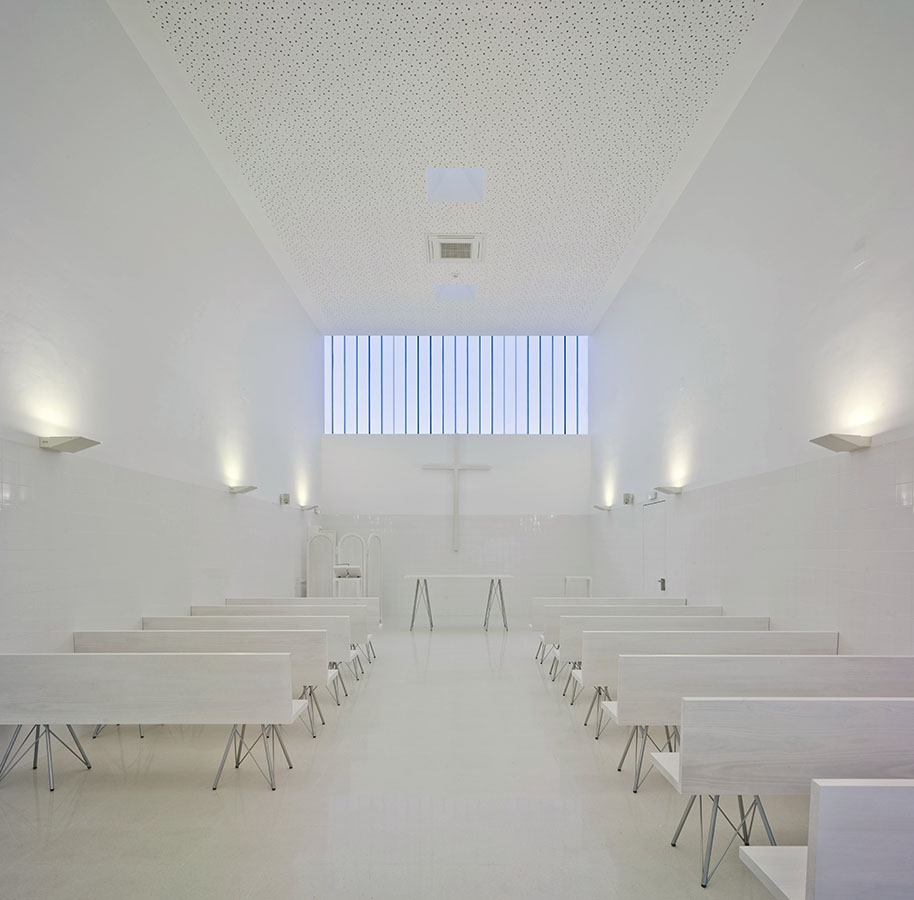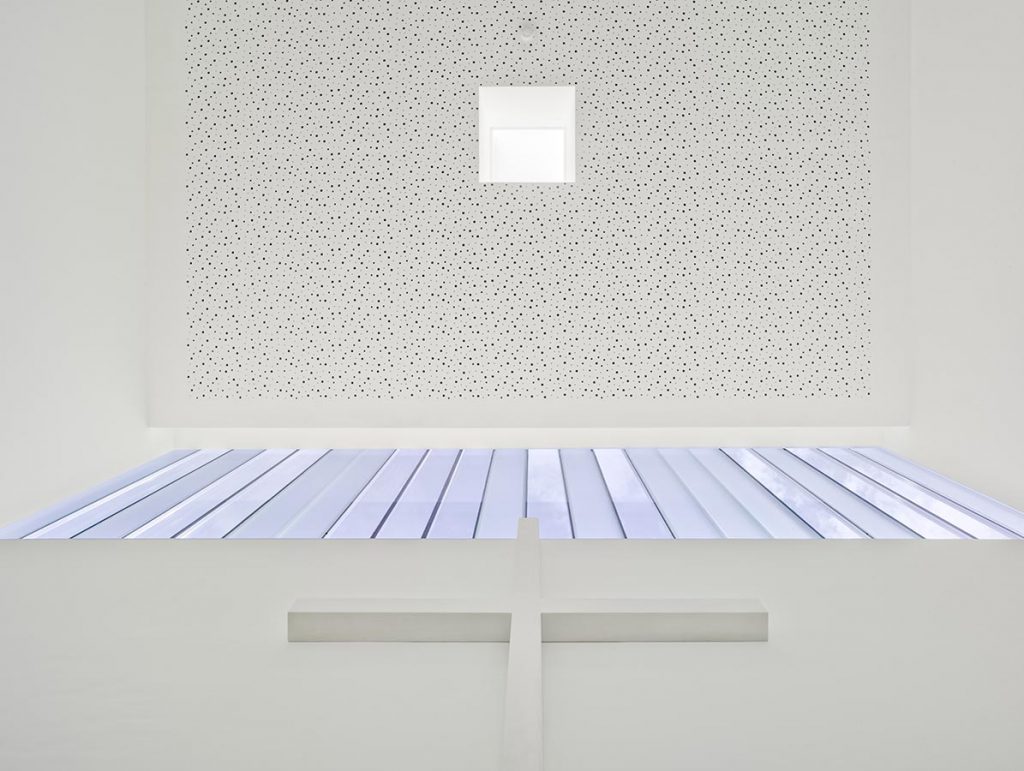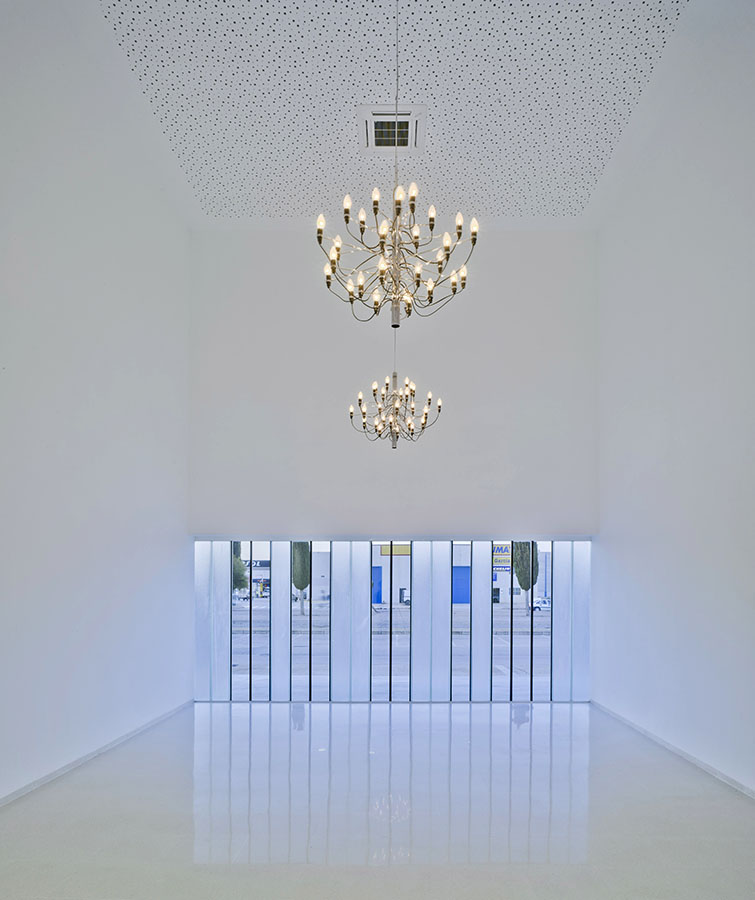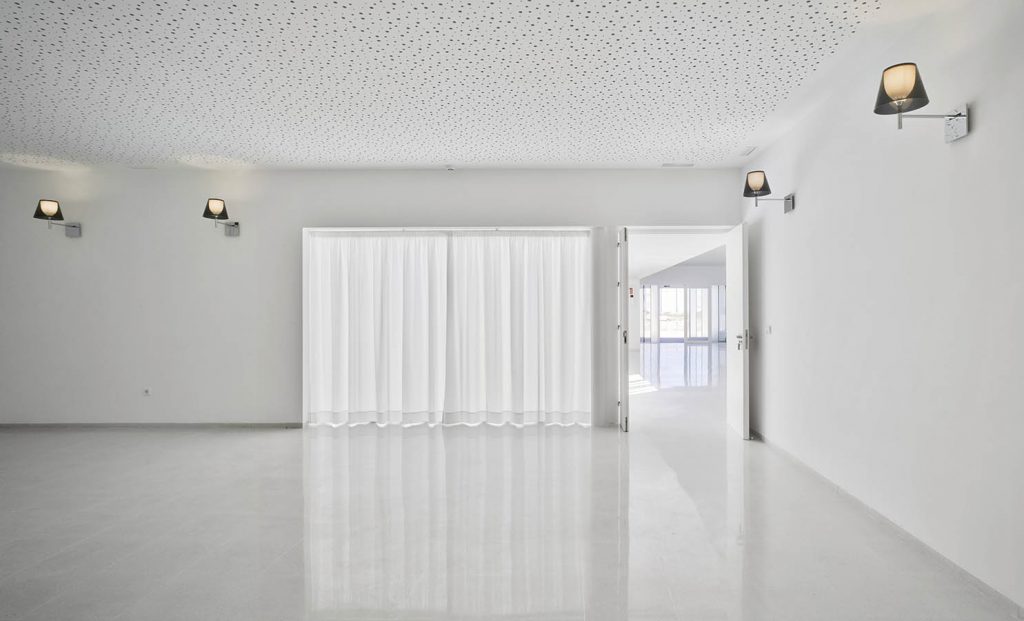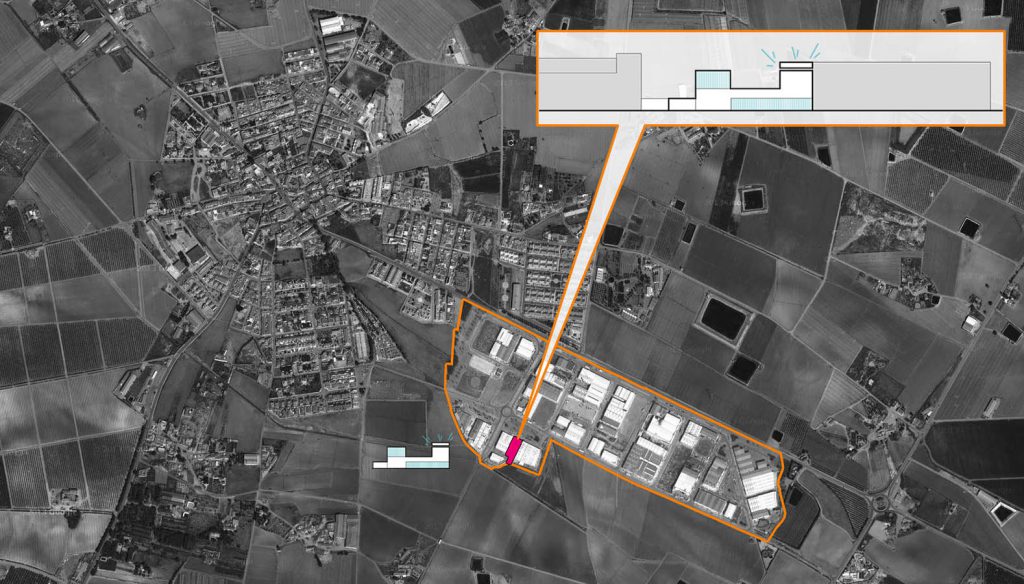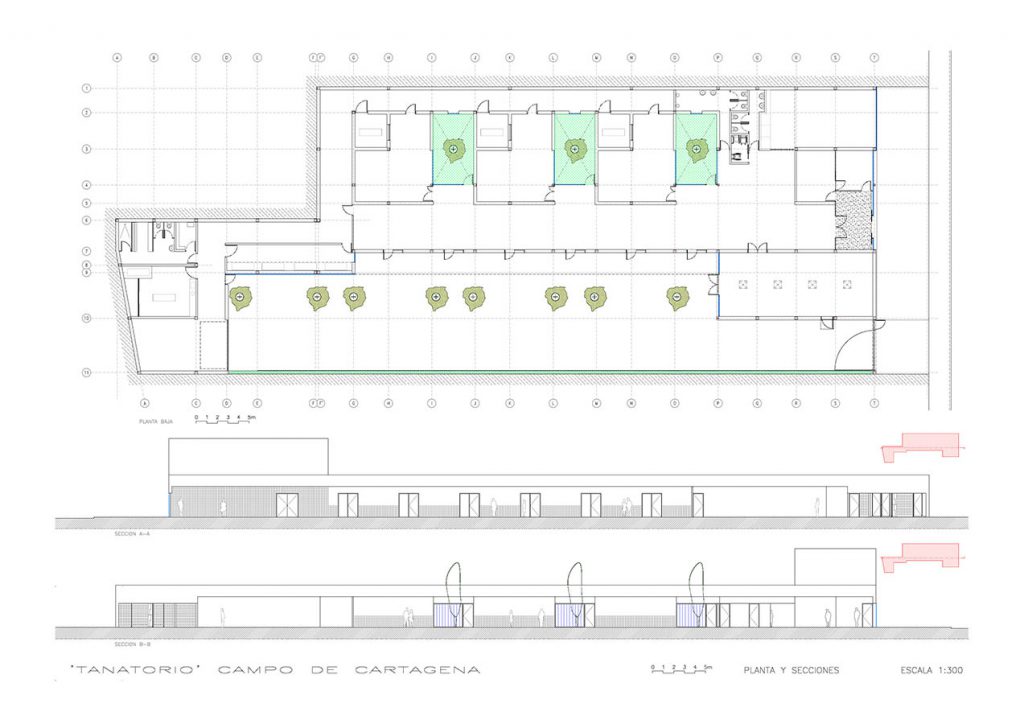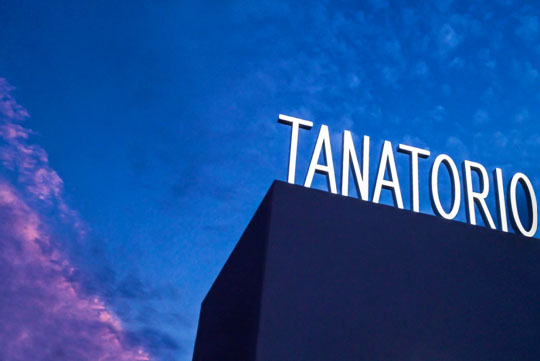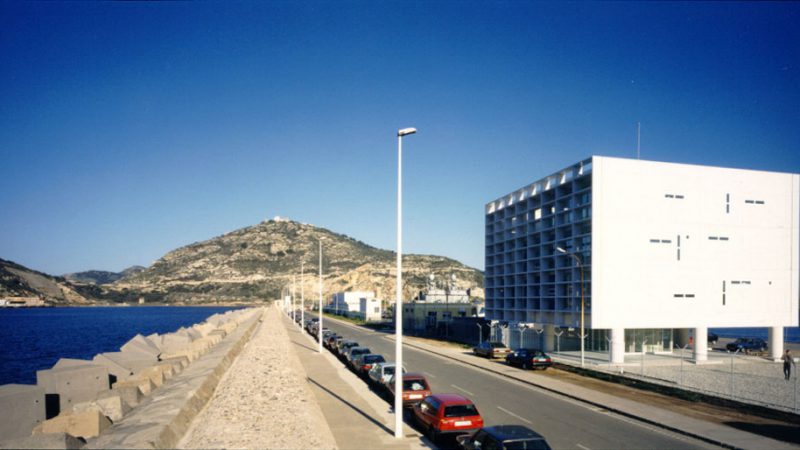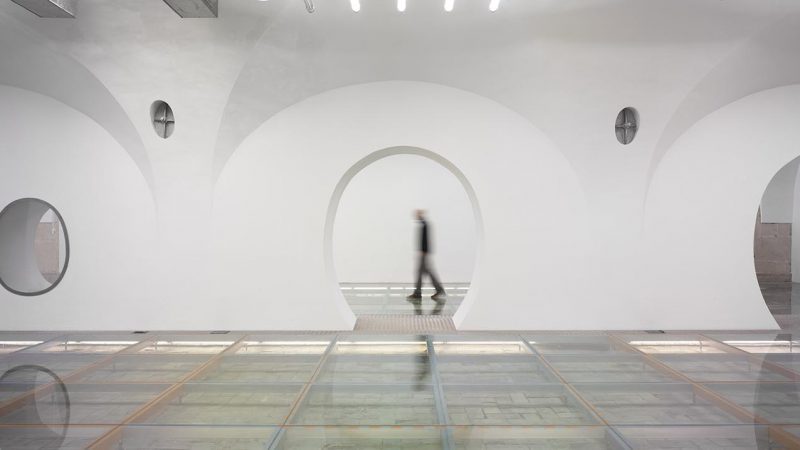A Mortuary in five lessons, with Ed Ruscha
The commission of the Mortuary project starts with the location and management of a plot to raise the building. The property, an insurances company of local and regional scope, wanted to strengthen its customer base with this kind of facility in the area in which it concentrates his operations: the North of Cartagena, between the towns of ‘La Palma’ and ‘Pozo Estrecho’, in the surroundings of the Field of Cartagena and the ‘Mar Menor’ sea.
That was how everything started and how I learned the first lesson of work: nobody wants a mortuary in their neighbourhood.
After many attempts to purchase available plots at different locations, in a drift that progressively and inexorably leads us away from the nearest and accessible places, we just finished in the industrial park.
There, we selected an interesting plot: well proportioned and oriented, and strategically located, open to the general parking area and green zone of the industrial park, in which we could hardly distinguish small artificial stone benches and some scattered cypresses, that no one had noticed, but they add land value to us.
The second lesson was to identify and interpret the location codes, an industrial site made of constructions, that despite their different condition and activity scale -production, exhibition, storage, commercial, etc.-, had some common patterns that gave the whole a strange and complex discrete continuity.
We had the third lesson learned in advance, fit the budget to the limit of viability. With this objective, we adjusted the building functional scheme to minimize it, with the consequent surfaces reduction and the achievement of an accurate and abstract construction.
Inside the building, the continuity provided by the white colour and natural light in its different orientations is qualified by the different size and proportion of successive spaces and textures of the materials that define them.
Designing and constructing all the furniture in the chapel, was more than a lesson a double challenge: to design, in addition to a bench, the set of pieces that form the symbolic and functional elements of the liturgy (the cross, the communion table, the lectern, etc.), and do it with a single system and material: pine wood plank, that in different combinations, allows us to solve an connect all parts of the room.
How to recognize the building in the distance against a backdrop of exotic signs was the last lesson: we support the sign on the top of the facade and cut it out against the sky, no doubt this was the best way to distinguish it from a distant point.
I bet Ed Ruscha himself would have liked it…

